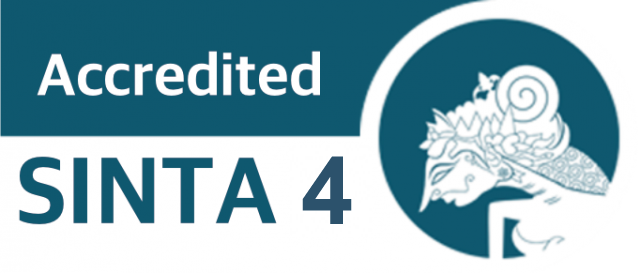IDENTIFIKASI PENULIS MENGGUNAKAN CONVOLUSIONAL NAURAL NETWORK BERDASARKAN KARAKTER TULISAN TANGAN
Abstract
An application or system is needed to distinguish handwritten characters, and it can be used to identify author-based handwritten characters. The aim of this research is so that the system created can determine whether a piece of handwriting is the work of a particular author. The creation of handwritten text can be done by capturing the image using a scanner with an image quality of 300 dpi, segmenting it using the thresholding method and contour selection from the image, combining the segmented images and processing the image from the segmentation results. The results of the convolutional autoencoder can be input into transfer learning (lazy learning) using KNN method to match with the author's handwriting. The study used 100 data sets from 20 authors, each of whom wrote five times. In the first trial, we used the dataset in handwritten sentence fragments from the title of a poem by Chairil Anwar. Tests were performed by comparing the machine learning process with and without a convolutional autoencoder. The test results with a convolutional autoencoder showed an accuracy of 89%, while the results without a convolutional autoencoder showed an accuracy of 88%.
References
[2] Jose E. Valdez-Rodrigues, Hiram Calvo, And Edgardo M. Felipe-Riveron. Handwritten Texts for Personality Identification Using Convolutional Neural Networks. International Conference on Pattern Recognition. 2018.
[3] Rohan Vaidya, Darshan Trivedi, Sagar Satra. Handwritten Recognition Using Deep-Learning. Proceedings of the 2nd International Conference on Inventive Communication and Computational Technologies. 2018.
[4] Anamika Sen, Harsh Shah. Automated Handwriting Analysis System using Principles of Grapology and Image Processing. International Conference on Innovations in Information, Embedded and Communication System. 2017.
[5] Sanae BOUTARFASS, Bernard BESSERER : Convolutional Autoencoder For Discriminating Handwriting Styles. Europan Workshop on Visual Information Processing. 2019.
[6] Jose L. Vasquez, Antonio G. Ravelo-Garcia, Jesus B. Alonso, Malay Kishore Dutta, Carlos M. Travieso. Writer identification approach by holistic graphometric features using off-line handwritten words. The Natural Computing Forum. 2018.
[7] Omar Santana, Carlos M. Travieso, Jeana B. Alonso, Miguel A. Ferrer. Writer Identification Based on Graphology Techniques. IEEE A&E System Magazines. 2010.
[8] Mahesh Jangid, Sumit Srivastava. Handwritten Devanagari Character Recognition Using Layer-Wise Training of Deep Convolutional Neural Networks and Adaptive Gradient Methods. Journal of Imaging. 2018.
[9] Champa and Ananda Kumar, Artificial Neural Network For Human Behavior Prediction Through Handwriting Analysis, International Journal of Computer Applications (0975–8887) Volume. 2010.
[10] Champa and Ananda Kumar, Automated Human Behavior Prediction Through Handwriting Analysis, In Integrated Intelligent Computing (ICIIC), First International Conference on Integrated Intelligent Computing, pp. 160-165. IEEE,2010
Copyright (c) 2024 TEKNIMEDIA: Teknologi Informasi dan Multimedia

This work is licensed under a Creative Commons Attribution-ShareAlike 4.0 International License.
Semua tulisan pada jurnal ini menjadi tanggungjawab penuh penulis. Jurnal Teknimedia memberikan akses terbuka terhadap siapapun agar informasi dan temuan pada artikel tersebut bermanfaat bagi semua orang. Jurnal Teknimedia dapat diakses dan diunduh secara gratis, tanpa dipungut biaya, sesuai dengan lisensi creative commons yang digunakan.

Jurnal TEKNIMEDIA : Teknologi Informasi dan Multimedia is licensed under a Lisensi Creative Commons Atribusi-BerbagiSerupa 4.0 Internasional


.png)





